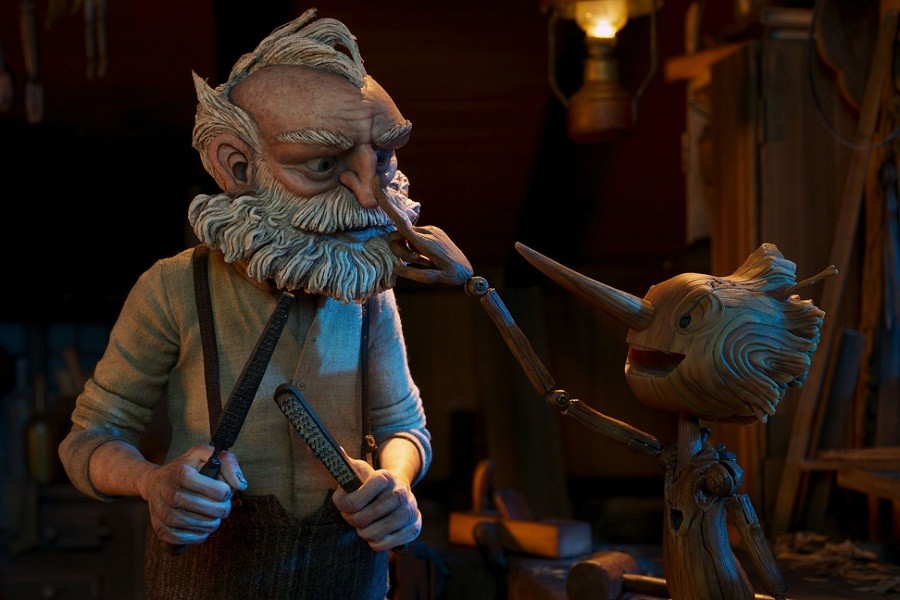Pinocchio is one of the greatest classic children's films of all time― a puppet going through his character development to prove himself worthy of being human.
The original novel by Italian author Carlo Collodi has been adapted for sliver screen portrayal twenty-one times, with the Disney adaptation in 1940 being the most popular and the benchmark for all adaptations.
However, the 22nd adaptation premiered on the 9th of this month, directed by Guillermo del Toro- more impactful and more closure than other films.
This del Toro's Pinocchio explored a new theme that other adaptations hadn't: war.
War brings nothing but pain and sorrow, and carpenter Geppetto is a victim of it. He lost his only son Carlo to the bombings of the First World War.
Geppetto's family is seen as an ideal Italian family, and Carlo is the family's heart. Losing him was devastating, resulting in Geppetto's indulging in a constant drunken stupor.
To cope with the grief, a drunken Geppetto decides to carve a puppet out of the pine tree that grew in his son's grave. Inside the tree lives Sebastian J. Cricket, a talking cricket who is trying to write his memoir.
The story of Pinocchio starts when the wood sprite or blue fairy takes pity on poor Geppetto and decides to give the wooden puppet life.
She offers Sebastian a deal to guide Pinocchio as his conscience in exchange for granting one wish. Pinocchio at first acts like an obnoxious and arrogant little child and is shunned when he tries to interact with society.
This film has two human villains: circus master Count Volpe and local fascist official Podestá. Both villains want to exploit Pinocchio for their own gains.
Volpe tries to earn his fortune, and Podestá tries to recruit Pinocchio into the Italian Army for his immortality. Geppetto tries to provide Pinocchio with a normal life, and Sebastian tries to guide him on a good path, but both fail.
Pinocchio's character development starts when he starts to defy Volpe and protests face-to-face against Italian dictator Benito Mussolini, becoming a symbol of fascism.
Podestá is just the counterpart of the coachman from the original story; he enlists Pinocchio in a special training camp for child soldiers.
Pinocchio helps Podestá's son Candlewick to be himself and stand up to his father. In other adaptations, the villains seem to get away with their wrongdoings. But in this del Toro version, they face their karma.
After the villains meet their fates, Pinocchio embarks on a journey to rescue his father, Geppetto, who is trapped inside the belly of a giant dogfish.
In this journey, Pinocchio shows great determination to save his drowning father after the chaos and prove himself a good boy to the blue fairy. Then the story progresses to the 'happily ever after' trope - Pinocchio turns into a mortal human being, but all of his family members die of old age.
The specialities of Guillermo del Toro's Pinocchio make it stand out from other adaptations because it explores more of its life story.
The devastations and effects of war and fascism are also portrayed in this film, which is a unique take.
The film also has philosophical lessons, questioning the value of immortality while every loved one is dying of old age. With the colourful stop-motion animation and a stellar voice cast, including Ewan McGregor, and Tilda Swinton, among many others, this film is a nostalgic memory lane of classic children's films.


